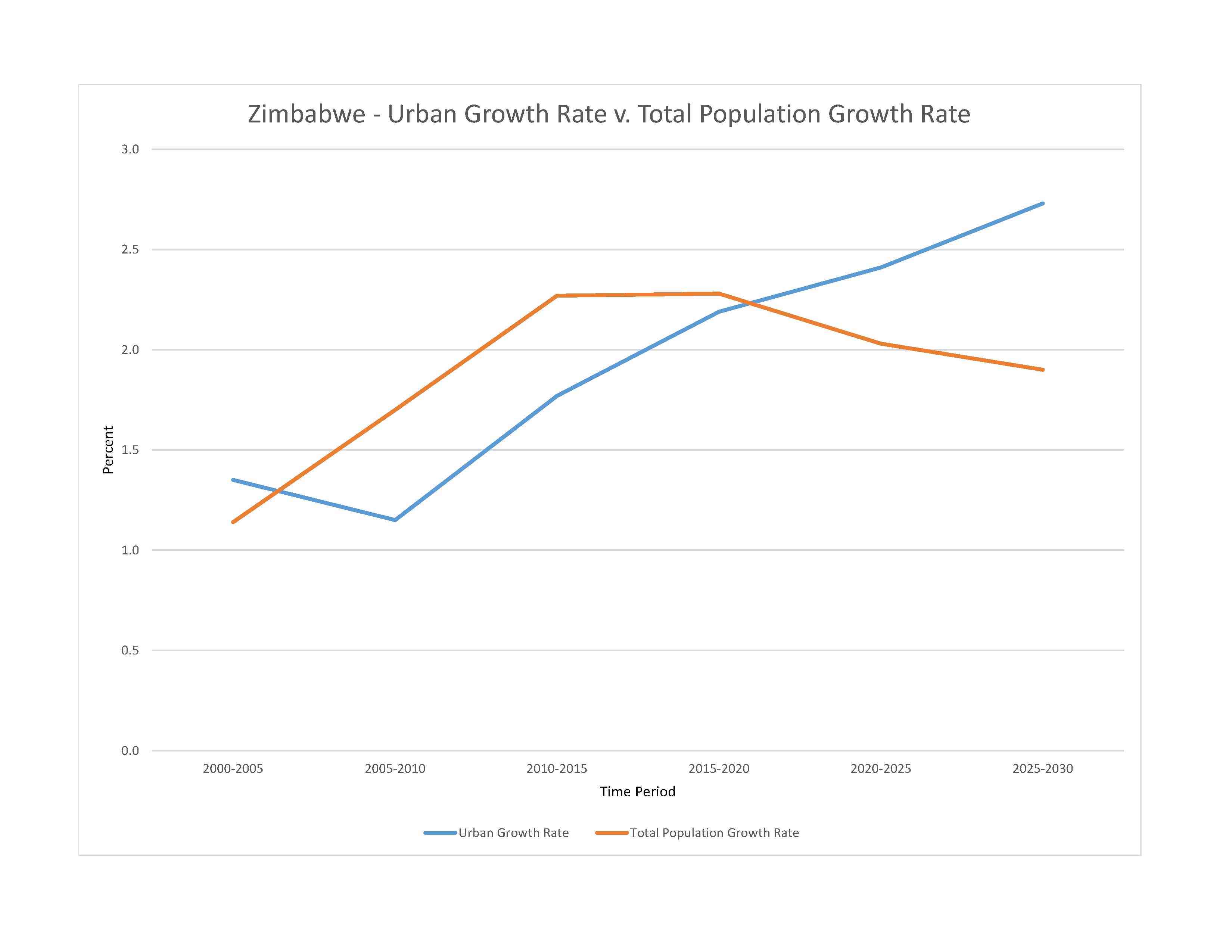
deforestation; soil erosion; land degradation; air and water pollution; the black rhinoceros herd - once the largest concentration of the species in the world - has been significantly reduced by poaching; poor mining practices have led to toxic waste and heavy metal pollution
party to: Biodiversity, Climate Change, Climate Change-Kyoto Protocol, Climate Change-Paris Agreement, Comprehensive Nuclear Test Ban, Desertification, Endangered Species, Hazardous Wastes, Law of the Sea, Ozone Layer Protection, Wetlands
signed, but not ratified: none of the selected agreements
tropical; moderated by altitude; rainy season (November to March)
agricultural land: 42.5% (2018 est.)
arable land: 10.9% (2018 est.)
permanent crops: 0.3% (2018 est.)
permanent pasture: 31.3% (2018 est.)
forest: 39.5% (2018 est.)
other: 18% (2018 est.)
urban population: 32.5% of total population (2023)
rate of urbanization: 2.41% annual rate of change (2020-25 est.)

widespread lack of access:due to high food prices- based on a government assessment, an estimated 3.8 million people are expected to be in need of humanitarian assistance between January and March 2023; this number is higher than the level estimated in the first quarter of 2022; the downturn in food security conditions is largely on account of poor food access resulting from prevailing high food prices and reduced incomes owing to the effects of an economic downturn; a decline in cereal production in 2022 has also aggravated conditions (2023)
1.61% of GDP (2018 est.)
0.4% of GDP (2018 est.)
particulate matter emissions: 13.08 micrograms per cubic meter (2019 est.)
carbon dioxide emissions: 10.98 megatons (2016 est.)
methane emissions: 12.1 megatons (2020 est.)
municipal solid waste generated annually: 1,449,752 tons (2015 est.)
municipal solid waste recycled annually: 231,960 tons (2005 est.)
percent of municipal solid waste recycled: 16% (2005 est.)
Zambezi (shared with Zambia [s]), Angola, Namibia, Botswana, and Mozambique [m]) - 2,740 km; Limpopo (shared with South Africa [s], Botswana, and Mozambique [m]) - 1,800 km
note – [s] after country name indicates river source; [m] after country name indicates river mouth
Indian Ocean drainage: Zambezi (1,332,412 sq km)
Internal (endorheic basin) drainage: Okavango Basin (863,866 sq km)
Upper Kalahari-Cuvelai-Upper Zambezi Basin
municipal: 650 million cubic meters (2020 est.)
industrial: 80 million cubic meters (2020 est.)
agricultural: 3.04 billion cubic meters (2020 est.)
20 billion cubic meters (2020 est.)
NOTE: The information regarding Zimbabwe on this page is re-published from the 2024 World Fact Book of the United States Central Intelligence Agency and other sources. No claims are made regarding the accuracy of Zimbabwe 2024 information contained here. All suggestions for corrections of any errors about Zimbabwe 2024 should be addressed to the CIA or the source cited on each page.
This page was last modified 04 May 24, Copyright © 2024 ITA all rights reserved.